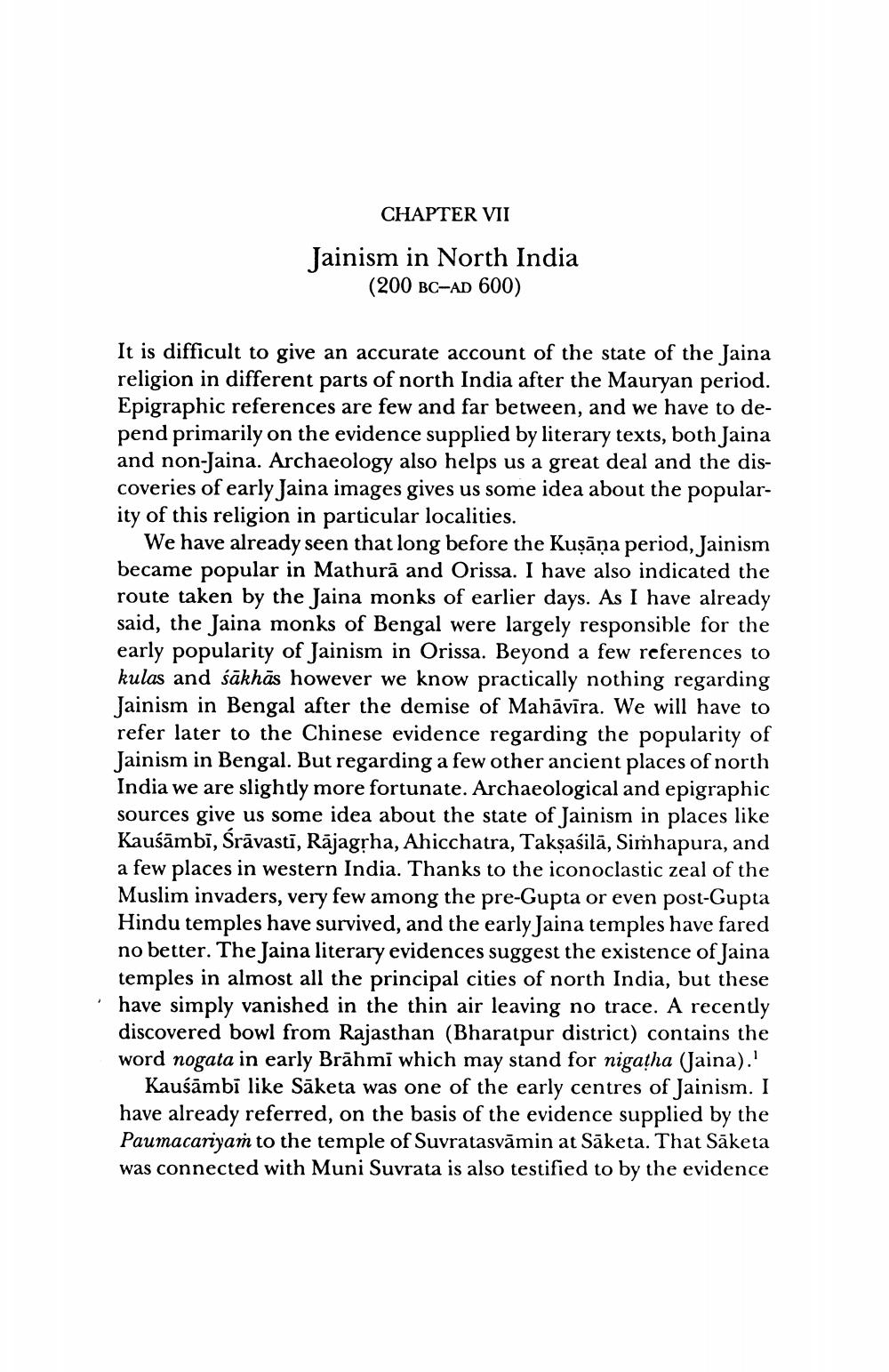________________
CHAPTER VII
Jainism in North India
(200 BC-AD 600)
It is difficult to give an accurate account of the state of the Jaina religion in different parts of north India after the Mauryan period. Epigraphic references are few and far between, and we have to depend primarily on the evidence supplied by literary texts, both Jaina and non-Jaina. Archaeology also helps us a great deal and the discoveries of early Jaina images gives us some idea about the popularity of this religion in particular localities.
We have already seen that long before the Kuşāna period, Jainism became popular in Mathura and Orissa. I have also indicated the route taken by the Jaina monks of earlier days. As I have already said, the Jaina monks of Bengal were largely responsible for the early popularity of Jainism in Orissa. Beyond a few references to kulas and sākhās however we know practically nothing regarding Jainism in Bengal after the demise of Mahāvīra. We will have to refer later to the Chinese evidence regarding the popularity of Jainism in Bengal. But regarding a few other ancient places of north India we are slightly more fortunate. Archaeological and epigraphic sources give us some idea about the state of Jainism in places like Kaušāmbi, Śrāvastī, Rājagpha, Ahicchatra, Takșasilā, Simhapura, and a few places in western India. Thanks to the iconoclastic zeal of the Muslim invaders, very few among the pre-Gupta or even post-Gupta Hindu temples have survived, and the early Jaina temples have fared no better. The Jaina literary evidences suggest the existence of Jaina temples in almost all the principal cities of north India, but these have simply vanished in the thin air leaving no trace. A recently discovered bowl from Rajasthan (Bharatpur district) contains the word nogata in early Brāhmi which may stand for nigatha (Jaina).'
Kaušāmbi like Sāketa was one of the early centres of Jainism. I have already referred, on the basis of the evidence supplied by the Paumacariyam to the temple of Suvratasvāmin at Säketa. That Sāketa was connected with Muni Suvrata is also testified to by the evidence




